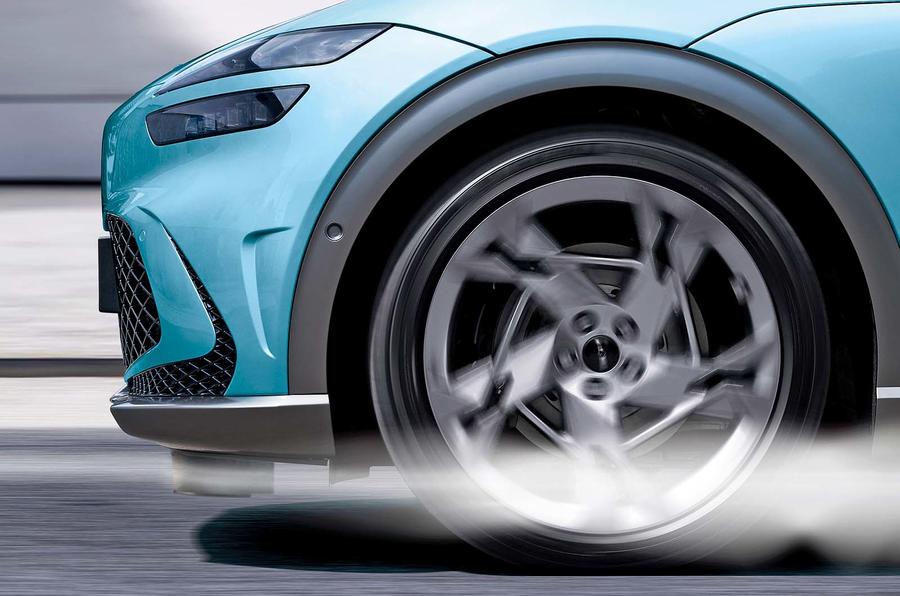The Hyundai motor group has developed a new active aerodynamic device called the active air skirt (AAS), which it expects to reduce a car’s drag coefficient by 2.8%.
That might sound like a modest amount, but every tiny increment counts here, and the company says the device could improve the range of electric cars cruising at higher speeds.
The AAS has already been tested on the Genesis GV60 electric SUV. It consists of two panels that drop down ahead of the front wheels at 50mph, the speed at which Hyundai says aerodynamic resistance becomes greater than rolling resistance.
To avoid it fidgeting in and out of play, there is some leeway before it retracts again. That happens at about 43mph. The aero aid can also be used at speeds in excess of 125mph and the panels have rubber lower parts to prevent damage from debris flung up from the road.
The AAS can vary its position to control air turbulence around the front wheels at different speeds too. It’s arranged in two separate parts, one for each wheel, simply because the flat underbody of the E-GMP platform for which it has been designed takes care of airflow under the centre section and extending the AAS right across the car would be unnecessary.
The 2.8% improvement in drag equates to a reduction of 0.008 in the Cd figure of the GV60, which Hyundai says could improve range by just under four miles, assuming the EV is driven consistently at speeds at which its AAS is in use.
This type of aerodynamic aid is being aimed squarely at SUVs, which are a tougher proposition than other car shapes when it comes to reducing drag.
Hyundai and Kia are also using various other aerodynamic devices on their cars, such as rear spoilers, active air flaps (AAFs), wheel air curtains, wheel gap reducers and separation traps. Those features are credited with giving the Hyundai Ioniq 6 electric saloon its low drag figure of 0.21.
AAFs open and close vents either side of the front bumper and when open generate the air curtain effect to reduce drag caused by the front wheels. Wheel gap reducers are trim pieces on the leading edge of the front wheel arches. And the separation traps are details either side of the rear bumper designed to guide airflow consistently from the edges of the rear spoiler down the sides of the car.
It is worth mentioning that the Hyundai Motor Group isn’t alone in using advanced aerodynamic aids to promote its expertise.
Back in the day, the 1982 Audi 100 was promoted as being the first production car with a Cd of 0.30. And BMW first mentioned its Air Curtain back in 2009 as part of its Efficient Dynamics programme.
It explained at the time that wheels and wheel arches are responsible for 30% of overall air resistance, 40% comes from the proportion and shape of the car, 10% comes from functional openings for cooling the engine, brakes and transmission and 20% comes from the underfloor.






Join the debate
Add your comment
Stop building SUVs, cars don't need to be so tall and heavy.
So what is your max height and weight of a car.
If electric cars Need them then surely it should be compulsory for ICE cars as fewer poisonous fumes will be emitted. Stupid headline.